

© Cécile Kobel

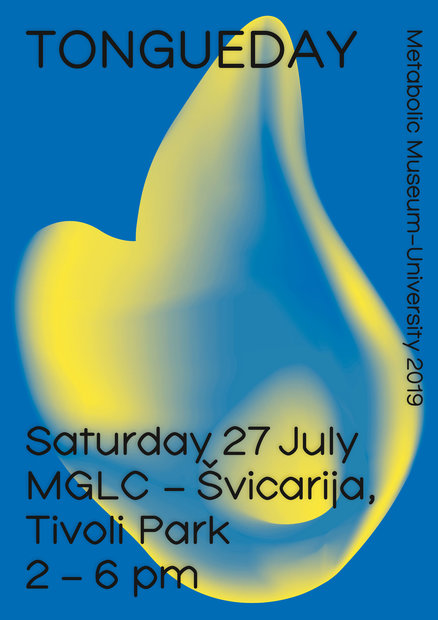
© Cécile Kobel

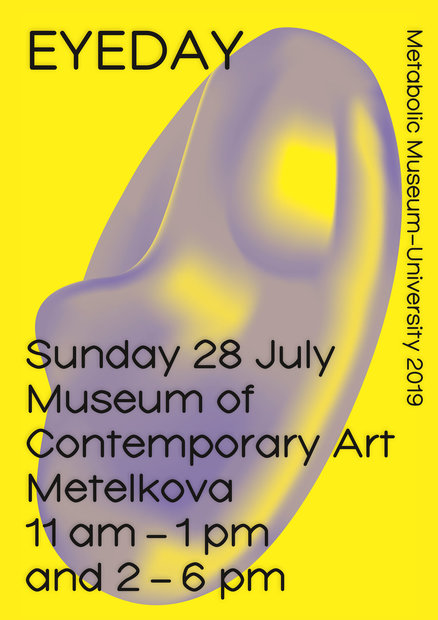
© Cécile Kobel


© Cécile Kobel

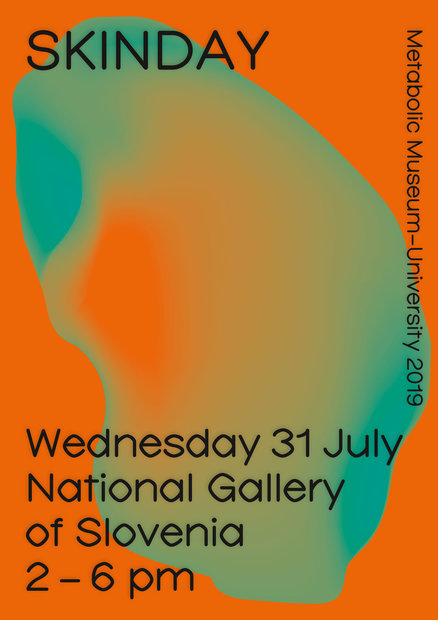
© Cécile Kobel

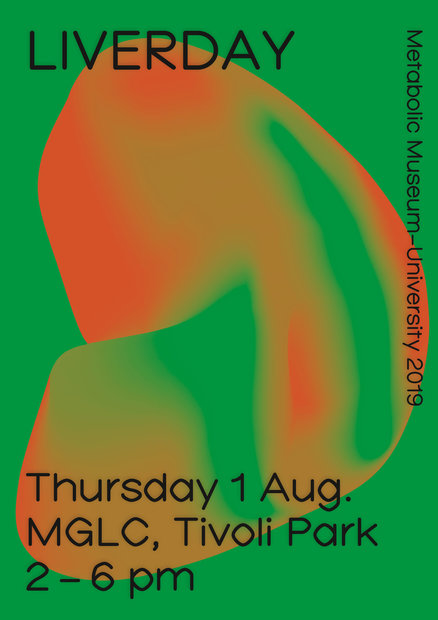
© Cécile Kobel

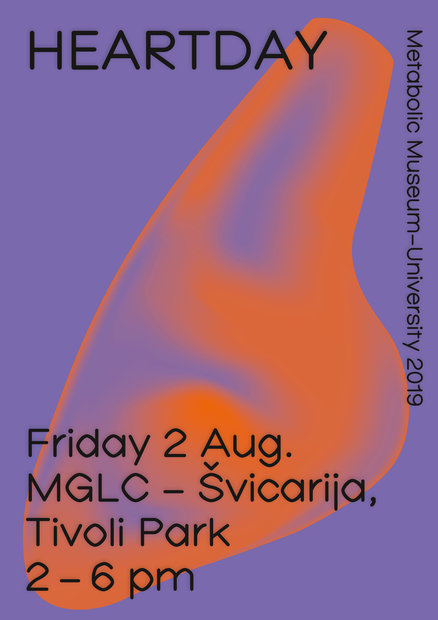
© Cécile Kobel

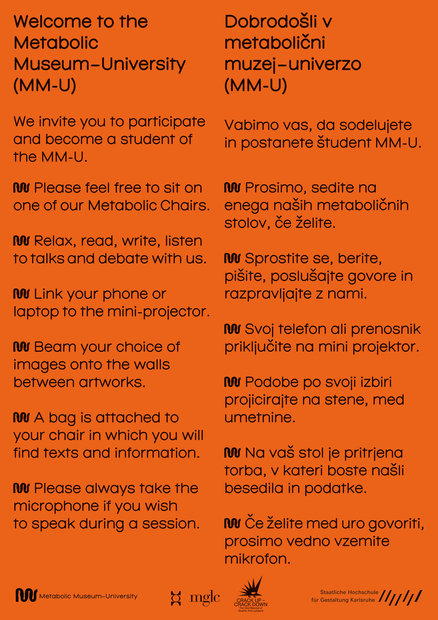
© Cécile Kobel


© Cécile Kobel

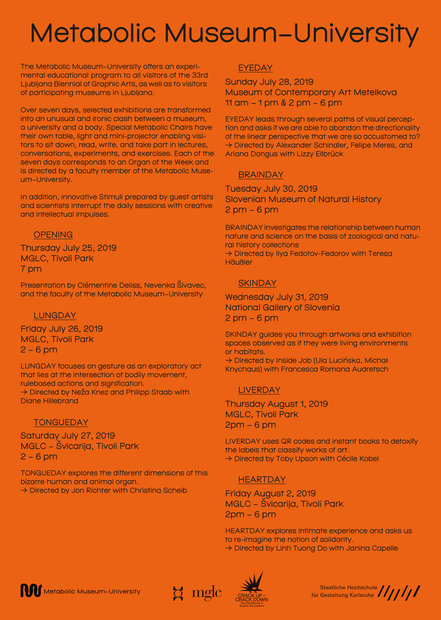
© Cécile Kobel
The Metabolic Museum-University offers an experimental educational program to all visitors of the 33rd Ljubljana Biennial of Graphic Arts, as well as visitors of participating museums in Ljubljana. Over seven days, selected exhibitions are transformed into an unusual and ironic clash between a museum, a university and a body. Unique furniture with a style based on home-camping provides visitors with the means to sit down, read, write, and take part in lectures, conversations, experiments, and exercises. Special metabolic chairs have their own table, light, and miniprojector, enabling participants to ‘spam the hang’ by projecting their own visuals into the gaps between artworks.
Each of the seven days corresponds to an Organ of the Week and is directed by a faculty member of the Metabolic Museum-University. In addition, innovative Stimuli prepared by guest artists and scientists interrupt the daily sessions with creative and intellectual impulses.
The Metabolic Museum-University is open and free to all visitors with entry tickets to the Biennial venues and museums. It encourages participants to take part in all sessions for the full week if possible, but sporadic visits are also welcome. Sessions will be held in English.
For updated information, please contact www.bienale.si; www.mglc-lj.si; or to ed.ehurslrak-gfh(ta)u-mm and follow us on instragram @metabolicmuseumuniversity
Opening
Presentation by Clémentine Deliss, Nevenka Šivavec, and the Faculty of the Metabolic Museum-University
Lungday
Directed by Neža Knez and Philipp Staab with Diane Hillebrand
LUNGDAY focuses on gesture as an exploratory act that lies at the intersection of bodily movement, rule-based actions and signification.
Philipp Staab will give an introductory talk on French concepts of mathematics and associate this philosophy with examples from European and American artistic practice from the 20th century. This juxtaposition aims to reveal certain productive encounters that have taken place between notions of ‘discipline’, the ‘body’ and ‘formalism’. Examples ranging from educational work on geometry to self-engineered techniques of asceticism propose an understanding of mathematics as an embodied, experimental activity. To conclude he presents a positive reading of ‘discipline’ as a tool for self-regulation and transformation.
For Neža Knez, action is a question of understanding. What is a, what is b? What is a word, what is a sentence, what is speech? What is the body and how do we think through the body? The voice both produces speech and punctures speech at the same time. The less we hear, the more we want to hear. Through verbal ‘non-sense’, Knez makes the speaker, who is also the listener, think beyond a language spoken and heard. Visitors are invited to sit on chairs and read a language which they do not know. In parallel, listeners will hear a language they do not recognise. With this performance, Knez investigates the endurance of participation and the relation of intangibility to different forms and illusions. How long is one willing to remain polite while receiving misunderstandings as information?
Tongueday
Directed by Jon Richter with Christina Scheib
TONGUEDAY explores the different dimensions of this bizarre human and animal organ.
With over 10,000 taste buds, the tongue is a fantastic tool. It is also the subject of colloquialisms such as ‘hold your tongue!’ or ‘tongue in cheek’.
In various ways, the tongue produces difference and sometimes appears to have a life of its own – a life that has the ability to question and express authority. To tear out the tongue is the most radical means of power against freedom of speech. Basing his lecture on philosopher Gilles Deleuze’s distinction between humour and irony as methods for subverting the rule of law, Richter conducts a session of talks and exercises that aim to loosen our tongues, so they can play their part in the metabolic concert of the organs.
Eyeday
Directed by Alexander Schindler, Felipe Meres, and Ariana Dongus with Lizzy Ellbrück
EYEDAY leads you down several paths of visual perception.
Guided by Alexander Schindler, we begin with the concrete object and its two-dimensional visual representation. Then we try to sensitize ourselves to the unconscious processes of kinaesthetic perception. We find out that with acts of cognition, every object as well as its visual representation is in constant motion. It is never still but always spatial and temporal. During interactive moments, we dedicate ourselves to so-called model-based images. They are the result of intensive rendering processes of highly detailed metric measurements of spatial situations. Their appearance on our screens suggests the possibility for manifold observations of nearly endless scale and perspective. Schindler asks: are we able to abandon the directionality of the linear perspective we have become so accustomed to? Can we apprehend the extended process of ‘Polyscopy’, multiplying perspectives on an object in space and recognizing it as a kinetically constructed phenomenon? For Schindler’s session we follow the path of visual perception by means of an audio guide. Participants are asked to bring their smartphones with mobile internet connection to EYEDAY.
In the second session of EYEDAY, Felipe Meres focuses on the roles that 3D scanning and hyper-realistic imaging technologies play in the documentation of ethnographic collections in museums across Europe and the U.S. While anthropologists and curators highlight the benefits that could come from the unprecedented level of access to the objects that these technologies provide, the question of what it means to submit ethnographic and ritual objects to such secular technologies remains underexplored. The process of 3D scanning ethnographic artifacts inextricably ties the objects to a network that includes agents not often associated with museums, such as action games with intensive graphics renderings, blockbuster films with complex CGI effects as well as tech companies that develop the graphics cards, 3D rendering software, algorithms and image-capture technologies used in the process. What are the effects of forcefully subsuming ethnographic artifacts in such hyper-realistic network of CGI and in the larger project that aims to produce a level of photorealism never achieved before, effectively rendering the distinction between simulation and reality unattainable to the human eye?
In the final session, Ariana Dongus discusses the coded gazes of camera sensors from city surveillance to smartphones and how these billions of images of the world have become precious raw material in an age of algorithms and artificial intelligence. She will critically investigate the evolution of techniques for identification and control, tracing the emergence of new norms that connects the historical emergence of biometric fingerprinting in the colonial and industrial age to today’s war on terror. She asks, how can we form a collective political strategy to resist the objectification of people and their rendition into suspicious subjects, de-humanized and stripped of self-agency, history, and intelligence? The lecture performance invites participants to enter a multipolar, visual landscape of object traces, biometric apparatuses, texts and archival images to take a closer look at the ‘genealogy of obsession’ to measure differences.
Brainday
Directed by Ilya Fedotov-Fedorov with Teresa Häußler
BRAINDAY investigates the relationship between human nature and science on the basis of zoological and natural history collections.
Basing his session on a selective guided tour of the Slovenian Museum of Natural History in Ljubljana, Fedotov-Fedorov will uncover and discuss the museum’s collections and methodologies. Selecting specific artefacts, he will ask why certain animals are regarded as more important than others. Following his tour, participants will reconvene in the Metabolic Museum-University chairs to play a special game ‘Which Animal in Your Next Life?’. Based on individual answers, groups will be formed. Against the backdrop of current existential conditions, each group of human-animals shall debate their chances of survival. The session will conclude with a presentation by Fedotov-Fedorov of his artistic practice with archives and collections in the Moscow Museum of Zoology.
Skinday
Directed by Inside Job (Ula Lucińska & Michał Knychaus) with Francesca Romana Audretsch
SKINDAY guides you through the surface structure of the National Gallery of Slovenia.
Inside Job introduces binoculars to transform the existing exhibition into an abstract and immersive experience. By zooming in and out and observing in an unusual way, the realm of physical space shifts into a fluctuating, virtual territory. Similar to skin, we identify the functions of insulation, regulation, synthesis, protection and sensation. Observing artworks and exhibition spaces as if they were living environments or habitats, we learn about their peculiar migrations. Can we imagine a biennial happening in a sun-baked desert or deep under the earth? Can art and its production be freed from an anthropocentric perspective and taken out of the framework of architecture that persuasively governs our ways of reading? Using a speculative methodology, we seek to support the value of the imaginary in relation to normative systems of rational thinking and seeing. By combining the session with exercises in active observation and research-based discussions, we examine skin as one of the most important organs, which like a lens, draws together the states of being of all our organs.
Liverday
Directed by Toby Upson with Cécile Kobel
LIVERDAY uses QR codes and instant books to detoxify the labels that classify works of art.
Group exhibitions often feel similar to department stores. Here objects of desire are lined up and labelled with just enough information: brand, size, and price. In the store you are made to believe that taste is yours alone. In the exhibition space this didactic methodology of labelling clashes with the civic responsibility carried by cultural spaces of learning, sharing, and joy. For LIVERDAY Upson stimulates engagement between works and visitors by freeing the exhibit from the standardized label with its regular name of the artist, title of the work, date, medium, size, and provenance. Entering MGLC, visitors are encouraged to create a new label for each artwork by writing and drawing notes in open books and accessing digital repositories, mediated by QR codes. Following LIVERDAY, the material collected through these metabolic expulsions will be compiled into a digestive archive: gluttonous resources brimming with subjective interpretations. Related and gifted to each artwork, these collections of human expressions will provide poly-cultural nourishment for research, exhibition design, and future discussion.
Heartday
Directed by Linh Tuong Do with Janina Capelle
HEARTDAY explores intimate experience and asks us to re-think and re-imagine the notion of solidarity.
Linh Tuong Do asks us to consider; What solidarity represents in our present day context? How does it relate to current concepts of ‘power’, ‘alliance’, and ‘difference’? The heart as the organ of cardiac metabolism functions to synthesize growth, repair and regeneration. These three processes take place simultaneously and are central to the group situations and exercises set up by Linh Tuong Do. Activities in the form of speaking, writing, listening, and movement – whatever is most comfortable for participants – highlight modes of difference that may sometimes lead to conflicts, misunderstandings and divisions. Linh Tuong Do will introduce keywords, images, and questions in order to develop a subjective and open conversation about the notion of friendship.
STIMULI:
Through humorous and associative actions, Stimuli provide impulses to the lectures, conversations, experiments, and exercises of each Organ of the Week.
Stimuli interventions throughout the week by:
Jan Babnik (curator & editor), Rut Blees Luxemburg (artist & photographer), Jandra Böttger & Tatjana Stürmer (art histo-rian & graphic designer) Matthias Bruhn (art historian & media theorist), Mateja Bučar (dancer & choreographer), Ariana Dongus (media philosopher), Špela Drnovšek Zorko (anthropologist), Hypercomf (artist collective), Lennart Krauß (artist), Susanne Kriemann (artist & photographer), Mathias Lempart & Xavier Robles de Medina (graphic designers & artists), Augustin Maurs (musician & composer), Tom McCarthy (novelist), Andreas Müller (exhibition designer), Nataša Petrešin Bachelez (art historian & curator), Carlo Siegfried (exhibition designer), Eva Stenram (artist & photographer), Rebecca Stephany (graphic designer & artist), and guests.
The Metabolic Museum-University is a cooperation between the Karlsruhe University of Arts and Design and the MGLC, International Centre of Graphic Arts for ‘Crack Up – Crack Down’, the 33rd Ljubljana Biennial of Graphic Arts, 2019. With the participation of the Museum of Contemporary Art Metelkova, the Slovenian Museum of Natural History, and the National Gallery of Slovenia.
Concept and Direction: Prof. Dr. Clémentine Deliss, Karlsruhe University of Arts and Design
Additional Guidance: Prof. Dr. Matthias Bruhn, Prof. Andreas Müller Karlsruhe University of Arts and Design
Development & Organisation 2018–2019: Francesca Romana Audretsch, Janina Capelle, Lizzy Ellbrück, Teresa Häußler, Diane Hillebrand, Cécile Kobel, Christina Scheib
Correspondence and Communication: Lizzy Ellbrück, Francesca Romana Audretsch, Christina Scheib
Communication Design: Cécile Kobel
Social Media: Cécile Kobel, Lizzy Ellbrück
Furniture and Spatial Design: Diane Hillebrand, Janina Capelle, Teresa Häußler, Christina Scheib
Special Support: Hanne König, Thomas Rustemeyer, Exhibition Design and Scenography, Karlsruhe University of Arts and Design
Organisation MGLC, Ljubljana: Nevenka Šivavec, Director; Yasmín Martín Vodopivec, Assistant Director and Coordinator of the Metabolic Museum-University in Ljubljana; Iris Pokovec, Assistant Coordinator of the Metabolic Museum-University in Ljubljana
With thanks to Ždenka Badovinac, Barbara Jaki, Breda Cinc Juhant, Tobias Keilbach, Simon Knebl, Alex Knoppik, Evi Künstle, Christiane Linsel, Matthias Mai, Henrike Naumann, Ahmet Ögüt, Alenka Pirman, Sebastian Schäfer, Susanne Schmitt, Slavs and Tatars, Peter Weigand, Asya Yaghmurian, Adela Železnik!
Participating students:
Francesca Romana Audretsch, Janina Capelle, Lizzy Ellbrück, Teresa Häußler, Diane Hillebrand, Cécile Kobel, Christina Scheib
Supervision:
Clémentine Deliss
Period:
July 26 – August 2, 2020
Location:
33rd Ljubljana Biennial of Graphic Arts at MGLC Ljubljana, additional participating institutions of MM–U are Museum of Contemporary Art Metelkova,
Slovenian Museum of Natural History, National Gallery of Slovenia
Links:
https://www.e-flux.com/announcements/263405/metabolic-museum-university/